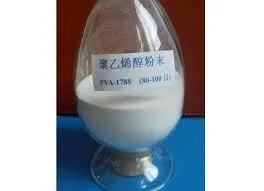The Role of Cellulose and HPMC in Paint Formulations
In the world of paint formulations, the importance of additives cannot be overstated. Among them, cellulose derivatives, particularly Hydroxypropyl Methylcellulose (HPMC), have gained significant attention due to their unique properties and versatility. This article delves into the significance of cellulose and HPMC in paint applications, exploring their benefits, functionalities, and overall impact on the quality and performance of paint products.
Understanding Cellulose and HPMC
Cellulose is a natural polymer derived from the cell walls of plants. It is the most abundant organic polymer on Earth and is extensively used in various industries, including food, pharmaceuticals, and construction, thanks to its biodegradable nature and availability. Hydroxypropyl Methylcellulose (HPMC) is a modified derivative of cellulose that enhances its properties. By introducing hydroxypropyl and methyl groups into the cellulose chains, HPMC gains solubility in water, thermal stability, and a range of viscosity characteristics that make it an ideal additive for paint formulations.
Benefits of HPMC in Paint
1. Thickening Agent One of the primary roles of HPMC in paint formulations is to act as a thickening agent. It increases the viscosity of the paint, allowing for better application and a thicker, more uniform layer upon drying. The ability to control viscosity is crucial for various application methods, including brushing, rolling, and spraying.
2. Improved Stability HPMC contributes to the stability of paint formulations. It helps prevent sedimentation of pigments and fillers, ensuring that the paint maintains a uniform consistency throughout its shelf life. This stability results in less waste and better performance during application.
3. Enhanced Workability Paints containing HPMC are generally easier to work with. The improved flow and leveling properties allow for smoother application and finish. This is particularly advantageous in high-quality decorative paints, where appearance is paramount.
4. Water Retention Another significant benefit of using HPMC is its water-retention capabilities. This property is essential for the drying process of water-based paints, as it allows for a slower evaporation rate, giving the paint more time to level out and adhere to the surface properly.
5. Film Formation HPMC plays a critical role in the film-forming properties of paints. A well-formed film is vital for durability, adhesion, and resistance to environmental conditions. HPMC helps achieve a robust, flexible film that maintains the integrity of the color and finish over time.
cellulose hpmc for paint

Applications of HPMC-based Paints
HPMC is widely utilized in various types of paints, including
- Water-based Interior and Exterior Paints Due to their low VOC content and ease of use, these paints benefit greatly from HPMC, providing excellent viscosity and application characteristics.
- Texture Coatings In texture and decorative coatings, HPMC helps achieve the desired consistency and appearance, allowing for diverse finishes that can enhance aesthetic appeal.
- Primers and Sealers HPMC’s film-forming qualities improve the adhesion and durability of primers and sealers, ensuring better protection for underlying surfaces.
Environmental Considerations
The move towards eco-friendly and sustainable products has increased the demand for natural and biodegradable additives. Cellulose and its derivatives like HPMC fit well into this trend. As renewable resources, they contribute to reducing the environmental footprint of paint products, making them suitable for environmentally conscious consumers.
Conclusion
In conclusion, cellulose and Hydroxypropyl Methylcellulose (HPMC) play a vital role in the formulation of paints. Their capabilities as thickening agents, stabilizers, and film-formers contribute to the quality and performance of paint products. As the industry continues to innovate, the importance of such natural and efficient additives will likely grow, supporting advancements in paint technology and environmental sustainability. With a better understanding of the benefits and functionalities of HPMC, manufacturers can create superior paint products that not only perform exceptionally but also resonate with the modern consumer's values.
-
Rdp that The Revolutionary Polymer Powder Transforming Modern Construction MaterialsNewsAug.11,2025
-
Hpmc Powder that Versatile Additive for Detergents and Personal CareNewsAug.11,2025
-
Hpmc Hydroxypropyl Methylcellulose that Essential Building Material Additive from Shijiazhuang Gaocheng YongfengNewsAug.11,2025
-
Hydroxypropyl Methyl Cellulos Hpmc that Essential for Construction ApplicationsNewsAug.11,2025
-
Mhec Powder that Revolutionizing Construction Chemistry with Cellulose Ether SolutionsNewsAug.11,2025
-
Industri Hpmc that The Global Backbone of Advanced ConstructionNewsAug.11,2025




